Graves and Epitaphs
The Nieuwe Kerk is of course best known for the tomb of William of Orange. However, within the church walls there are also a number of epitaphs and memorials of (slightly) less well-known Dutchmen that are definitely worth a look.
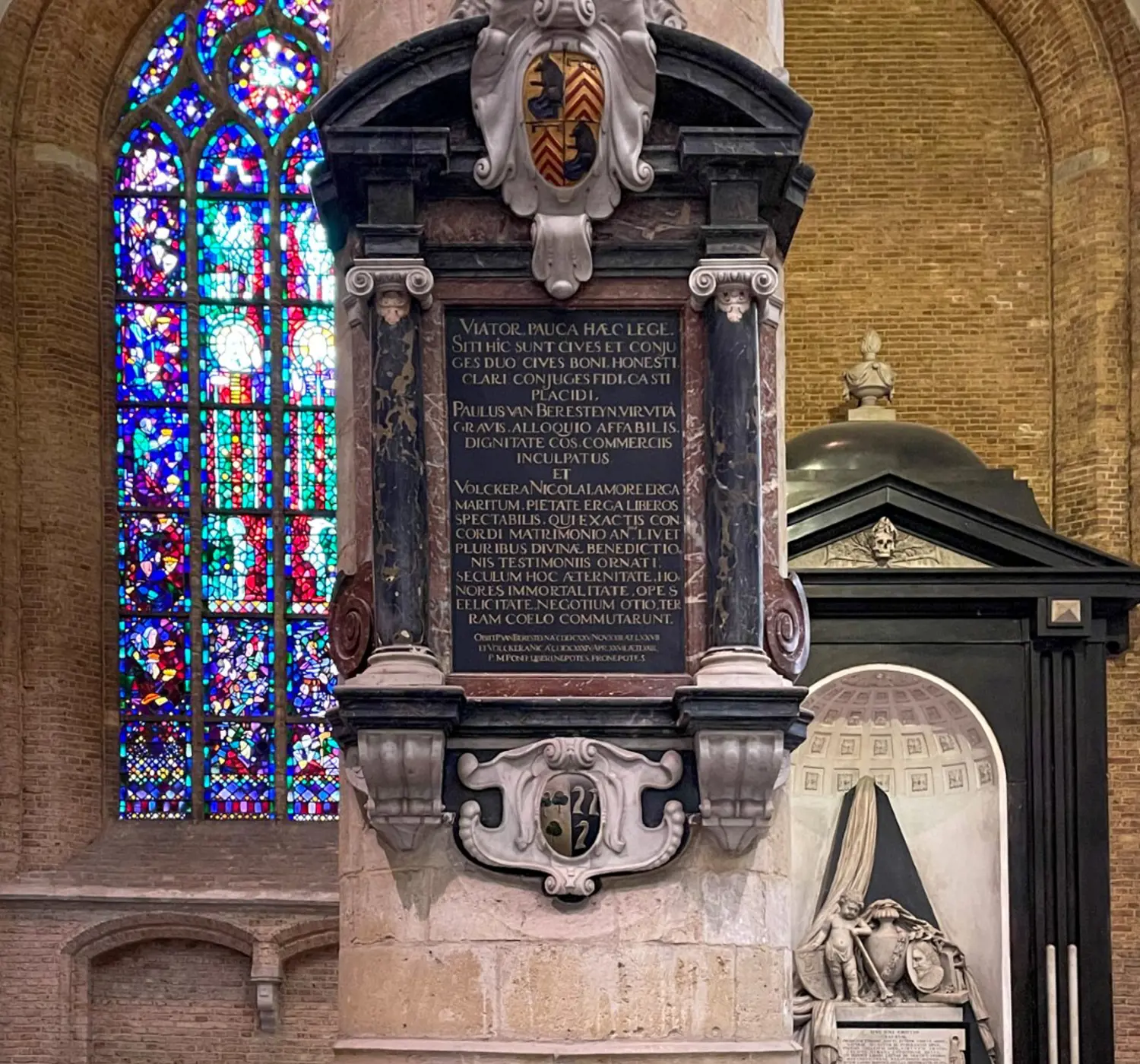
Royal
Besides William of Orange, five members of the Royal House received their own monument: Stadholder William V, his son William George Frederik, William Alexander Ernest Casimir (son of King William II), King William I and his eldest daughter Paulina.
German monument
The latter was first buried in Germany. However, her tomb was forgotten and became neglected. When someone rediscovered it in 1911, Queen Wilhelmina (grandmother of Beatrix) quickly had Paulina interred in the New Church. The monument - with German inscription - also came with her.
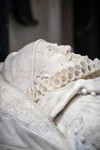

Respectfully
Hugo de Groot, the man who managed to escape in a book chest from the heavily guarded Loevestein castle, also lies in the New Church. Close to Prince Maurice, who had him imprisoned. The black-and-white marble mausoleum respectfully recalls this intelligent jurist.
Curious?
Incidentally, only very curious people are supposed to approach the monument. Indeed, the end of the epitaph reads:
'Dodge this corpse rock: De Groot is buried here, you who do not glow with thirst for skill and a love for freedom.'
Discover more about the interior of the New Church
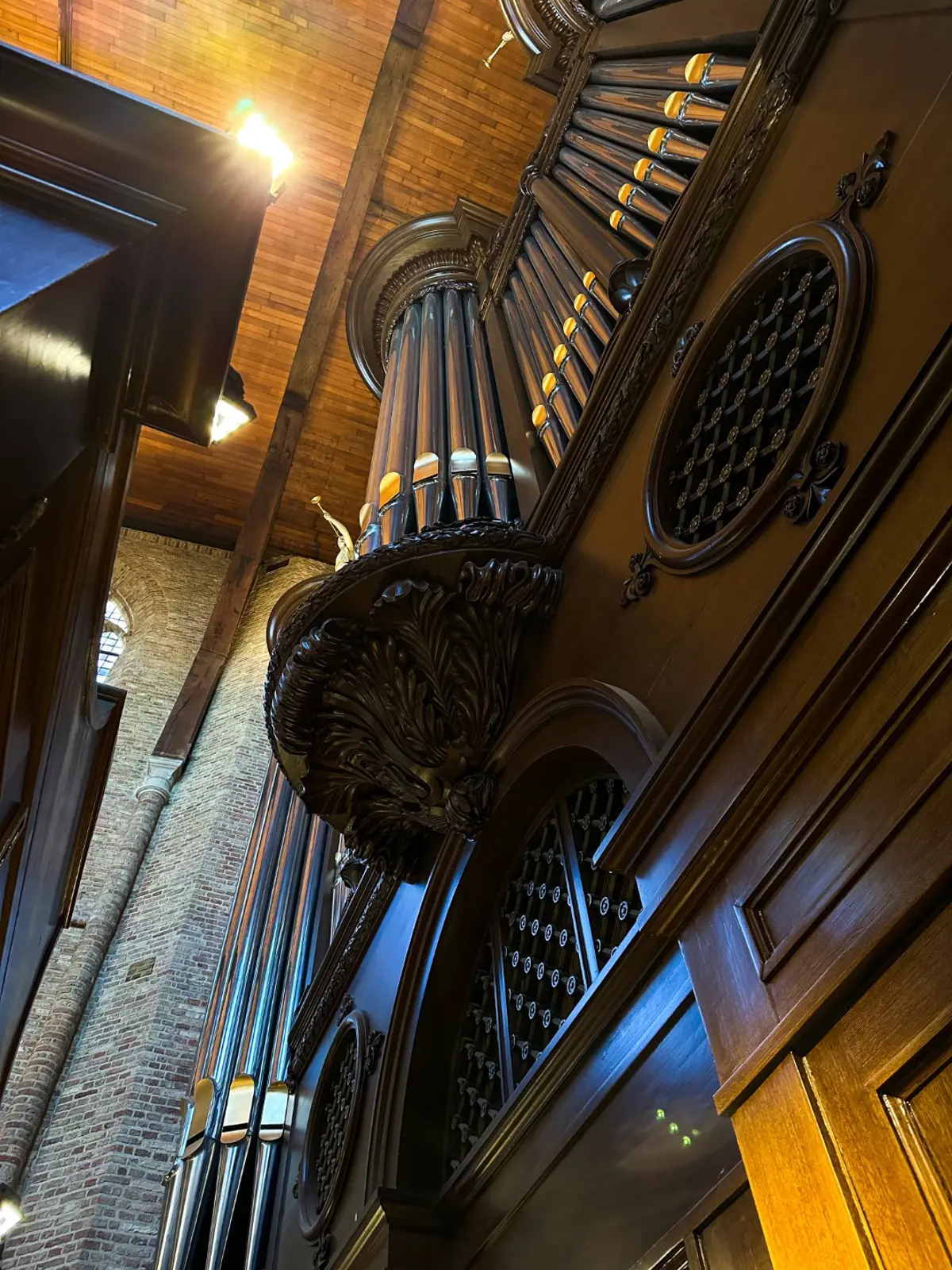
Organ
There is so much to see in the New Church; every spot offers a different perspective on the architecture and sights. Looking from the tomb of William of Orange towards the entrance, however, the view is dominated by just one object: the giant pipe organ!
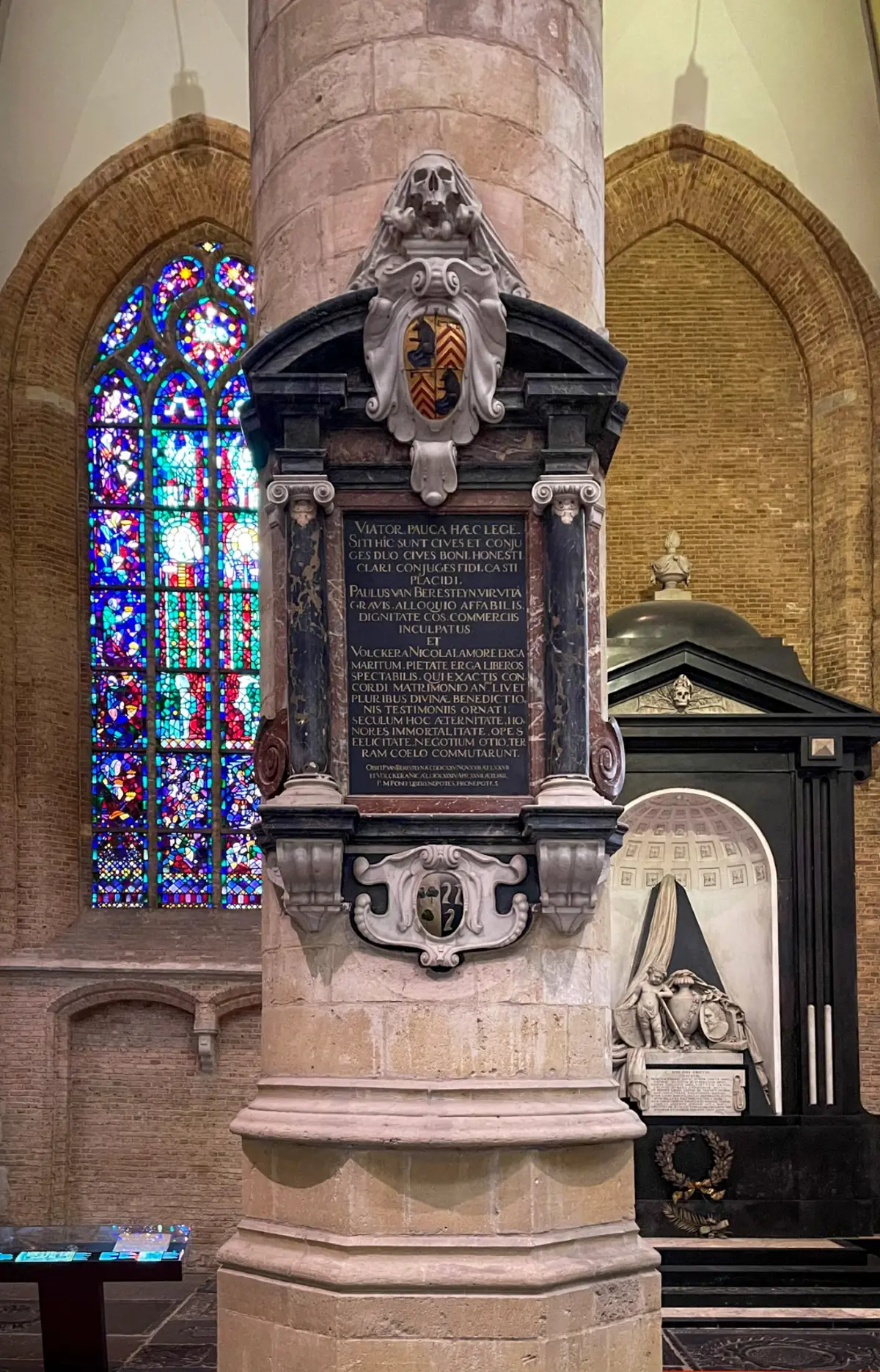
Graves and Epitaphs
The Nieuwe Kerk is of course best known for the tomb of William of Orange. However, within the church walls there are also a number of epitaphs and memorials of (slightly) less well-known Dutchmen that are definitely worth a look.
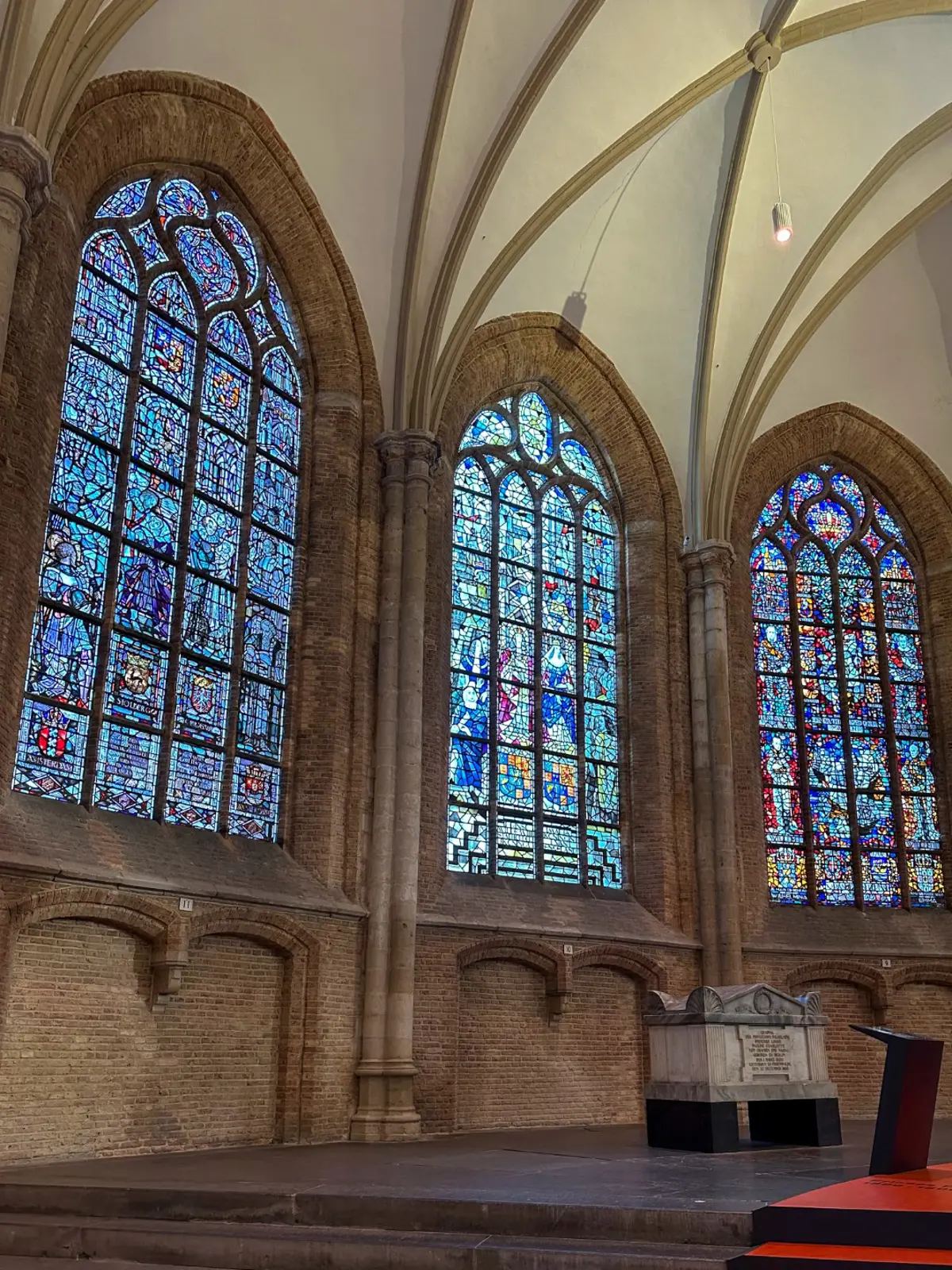
Windows
Besides the grand tombs and other sights, the stained-glass windows of the New Church also demand your attention.
